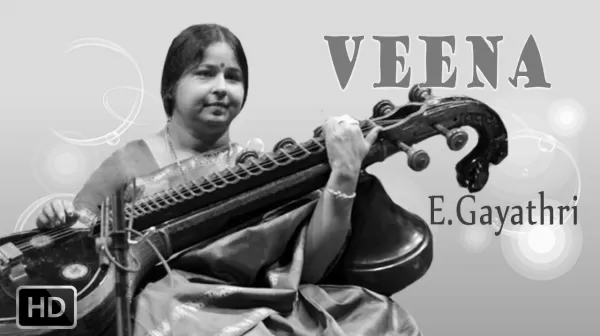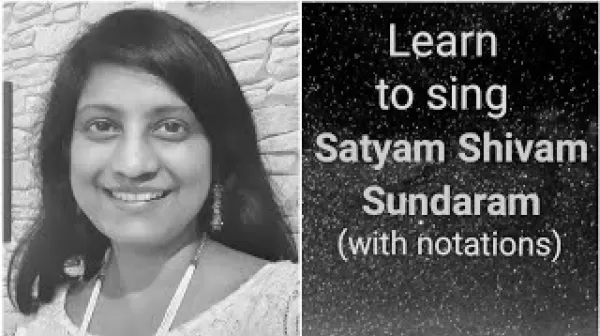राग
Carnatic Vocal ❤️ Annamacharya Krithis ❤️ Naanaati Patuku Natakamu ❤️ Nithyasree Mahadevan
Indian classical music is the art music of the Indian subcontinent. Carnatic music, from South India is rhythmic and structured. Our channel presents Carnatic classic music,Carnatic ragas,Carnatic music songs,popular classical music etc. Enjoy and let us know your feedback in the comments below. Annamacharya Kritis - The musical form of the keertana songs that he composed, which are still popular among Carnatic music concert artists, have strongly influenced the structure of Carnatic music compositions.
Carnatic Vocal ❤️ Vandhadhu vum ❤️ Sri Krishna Gaanam ❤️ S.Sowmya
Carnatic music is a system of music commonly associated with the southern part of the Indian subcontinent, with its area roughly confined to four modern states of India: Andhra Pradesh, Karnataka, Kerala, and Tamil Nadu. It is one of two main sub genres of Indian classical music that evolved from ancient Hindu traditions; the other sub genre being Hindustani music, which emerged as a distinct form because of Persian and Islamic influences in North India. Classical music is art music produced or rooted in the traditions of Western music (both liturgical and secular).
Mandolin Melodies ❤️ Classical Instrumental ❤️ Thillana ❤️ U.Srinivas
A mandolin is a musical instrument in the lute family and is usually plucked with a plectrum or "pick". It commonly has four courses of doubled strings tuned in unison (8 strings), although five (10 strings) and six (12 strings) course versions also exist. The courses are normally tuned in a succession of perfect fifths. It is the soprano member of a family that includes the mandola, octave mandolin, mandocello, and mandobass. Click below to Subscribe to our Channel for Regular Videos!
Classical Instrumental ❤️ Veena ❤️ Mokshamu Galada ❤️ E.Gayathri
The earliest Veena was an instrument of the harp type whose type survives in the Burmese harp, whereas in the last centuries and nowadays, the word has tended to be applied to instruments of the lute type or even, recently, to certain kinds of guitars developed in India. The more popular sitar is believed to have been derived from a type of Veena which was modified by a Mughal court musician to conform with the tastes of his Persian patrons. A person who plays a Veena is called a vainika.
Flute & Gottuvadyam ❤️Thayea Tripura Sundari ❤️ Classical Instrumental ❤️ B.V.Balasai & A.Durgaprasad
Gottuvadhyam also known as the chitravina, is an instrument played in Southern India. It is usualy used as a solo instrument in Carnatic sangeet. Flute is a family of musical instrument of the woodwind group. Unlike woodwind instruments with reeds, a flute is an aerophone or reedless wind instrument that produces its sound from the flow of air across an opening. According to the instrument classification of Hornbostel Sachs, flutes are categorized as edge-blown aerophones.
Sax and Thavil ❤️ Classical Instrumental ❤️ Adukaradhuni ❤️ Kadri Gopalnath & A.K.Palanivel
Sax & Thavil - Thavil or Tavil is a barrel shaped drum from South India. It is used in temple, folk and Carnatic music, often accompanying the nadaswaram. The thavil and the nadaswaram are essential components of traditional festivals and ceremonies in South India. The saxophone (also referred to as the sax) is a family of woodwind instruments. Saxophones are usually made of brass and played with a single-reed mouthpiece similar to that of the clarinet. The saxophone family was invented by the Belgian instrument maker Adolphe Sax in 1840.
Classical Instrumental ❤️ Tabla Tarang ❤️ Dhun❤️Bhoopal ❤️ H.P.Ramamurthy
Tabla Tarang, the 'dayan' drums of the tabla are tuned to different pitches in the ascending order to enable the playing of melody.Tabla Tarang is a melodic percussion instrument consisting of between ten and sixteen tuned dayan drums. In a tabla "pair" instrument, the dayan is the treble drum and the bayan is the bass drum. Tarang means "waves". By hitting with the hand at the center of the different dayan drums – known as syahi – notes of different pitches are produced like a bell ringing. The player is able to perform melodies based on several ragas.
Veena ❤️ Classical Instrumental ❤️ Nee Irangayenil ❤️ E.Gayathri
Classical music is art music produced or rooted in the traditions of Western music (both liturgical and secular). It encompasses a broad span of time from roughly the 11th century to the present day.. The earliest Veena was an instrument of the harp type whose type survives in the Burmese harp, whereas in the last centuries and nowadays, the word has tended to be applied to instruments of the lute type or even, recently, to certain kinds of guitars developed in India.
Flute & Gottuvadhyam ❤️ Classical Instrumental ❤️ Bhagayada Lakshmi ❤️ B.V.Balasai & A.Durgaprasad
Flute is a family of musical instrument of the woodwind group. Unlike woodwind instruments with reeds, a flute is an aerophone or reedless wind instrument that produces its sound from the flow of air across an opening. According to the instrument classification of Hornbostel–Sachs, flutes are categorized as edge-blown aerophones. Gotuvadyam (often mis-spelt as gottuvadyam, gottuvadhyam, kottuvadyam etc.), which was bestowed upon it by Sakha Rama Rao from Tiruvidaimarudur, who was responsible for bringing it back to the concert scene.
Sax and Thavil ❤️ Classical Instrumental ❤️ Raja Raja Aradithe ❤️ Kadri Gopalnath & A.K.Palanivel
Saxophone (also referred to as the sax) is a family of woodwind instruments. Saxophones are usually made of brass and played with a single-reed mouthpiece similar to that of the clarinet. The saxophone family was invented by the Belgian instrument maker Adolphe Sax in 1840. Adolphe Sax wanted to create a group or series of instruments that would be the most powerful and vocal of the woodwinds, and the most adaptive of the brass that would fill the vacant middle ground between the two sections. The Thavil (Tamil: wikt:தவில்) or Tavil is a barrel shaped drum from South India.










